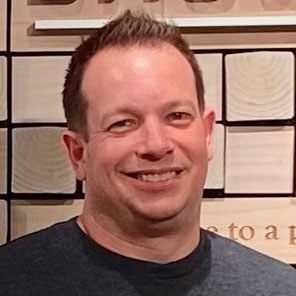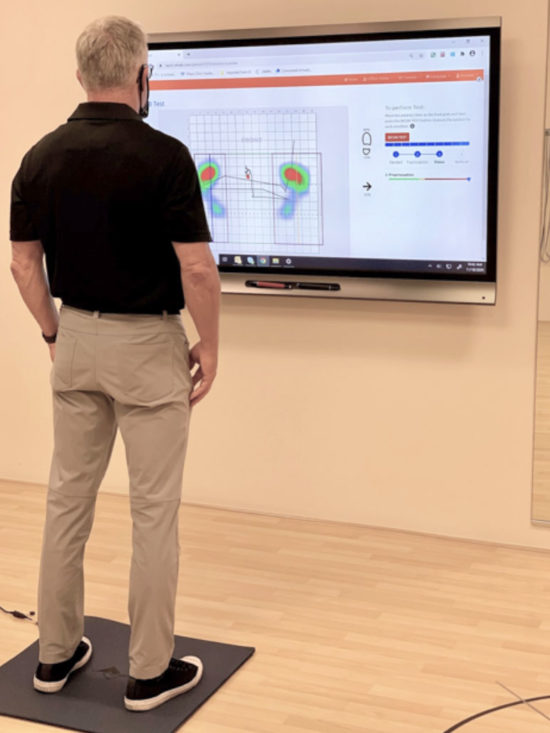 By Philip Stotter, CEP
By Philip Stotter, CEP
If you have ever heard the song “Gravity” by John Mayer, you would be familiar with his lyrics, “Gravity is working against me, and gravity wants to bring me down.” So, what is this incredibly strong force called gravity that John Mayer is talking about? And how does it apply to every living organism on Earth?
We can thank Isaac Newton who answered these very questions for us. Newton, the greatest scientist of his time, created a paradigm shift in human understanding of the physical world, and changed the course of the world as we see it today. It took a genius mind to figure out that an apple falling from a tree toward the ground was caused by an attractive force from an exponentially larger mass, the Earth itself.
So why is our relationship with gravity so important? When we think about how our bodies move and how we keep ourselves in an upright position, we must understand that there are only 3 things at play. There is us, this small mass; then there is this incredibly large mass called Earth, that lies beneath our feet; and finally, there is this extremely strong force acting on us as well as between us and the ground—it’s called gravity. Understanding this multi-directional relationship and measuring it can go a long way to improving our daily function.
As residents on Earth, we are and always will be subject to this one constant, Gravity. There are numerous studies showing how our bodies are affected by gravity. Long story short, gravity is necessary for your body to understand what it needs to do to function normally. You can apply the laws of gravity to every single cell in the human body and it will relate in some way to its core function. Also, to truly understand our bodies and the way they move, we must understand the importance of gravity. Without gravity, everything we know about movement would be wrong. All movements begin with our interaction with gravity and in turn, the ground beneath our feet. Gravity is a force that acts on our bodies. And, as Newton also established, all forces change matter over time. Since we are matter, we are subject to those changes. Eventually, and for approximately 36 million of us per year,1 Gravity will win.

A test of clinical fall risk measuring foot pressure and sway analysis conducted on the RAPID-Rehab Balance, Function, and Fall Risk Digital Lab (www.rapidtechsoftware.com).
You guessed it. I’m talking about falls. The leading major health problem in the world starts with the human body’s relationship with gravity and this relationship starts beneath your feet. It’s within this collision between you and the ground where your functional tendencies are hardwired. Whether it’s your genetics or your learned physical behavior, all is rooted in what lies beneath. The force of gravity against our bodies and the way we react to it is what creates our unique foot pressure profile and center of pressure sway measurement. You can link pain, performance, or predict fall risk with your foot pressure profile and center of pressure sway measurement. On average, there are only 10 unique profiles, but each person measures in a unique way. Furthermore, the longer your sway center of pressure measurement, the more likely you are at risk for injury or a fall. As I mentioned before, this can be something you’re born with (genetics) and is why we stand and walk like our parents, or it can be learned or trained over time as it relates to functional conditioning. There are also certain profiles and measurements that can predict greater risk for falls in older adults.
The kinetic energy that runs through the body as the reactive force a person creates against gravity is determined by the highest points of force beneath the feet. This energy leads to specific activation of the kinetic chain and the way a person works to control (sway) their posture/body against gravity. Over time, our bodies will be unable to keep up with the constant demand of gravity. Imagine that you are asked to wear a backpack for an hour. This backpack will create greater pressure and increase the sway of your body. By the end of that hour, you will be more than happy to take it off. Now imagine not being able to take it off? Your body will adapt in the best way possible, but eventually, it will break down faster. That break down can lead to functional impairment as well as a catastrophic event like a fall.
Clinicians can gain valuable insight into their patients’ functional health through foot pressure profiling and measuring the sway of the center of pressure. By recording these metrics with ground force/pressure technology, a clinician opens a window to an objective understanding of fall risk predictors as well as identifying asymmetries in their patients’ bodies. Whether a patient displays tendencies, characteristics, or is susceptible to certain injuries or physical deficiencies, all can be revealed by identifying a patient’s foot pressure profile and center of pressure measurement. Measuring a patient’s postural sway through ground force technology will lead to greater patient engagement, which in turn will lead to better patient outcomes.
Ground force technologies such as ground pressure mats can turn a clinical practice into an objective, non-biased balance, function, and fall risk lab. Identifying a patient’s foot pressure profile and his or her kinetic sway tendencies will go a long way to help take the appropriate corrective actions to prevent a fall. Regardless of their age, we as clinicians have a responsibility to identify each patient’s current relationship with gravity. And through this understanding as care providers, we can become proactive, limiting the weight of their backpack, which will go a long way to building a better relationship for them with gravity.
Philip J. Stotter, CEP, is a veteran clinical exercise physiologist turned inventor/business developer, and the Visionary and Founder behind Stotter Technologies, Moflex foot/ankle training device, AA360, and others. As a practitioner, researcher, and educator, Philip has over 25 years of experience in performance, corrective and preventative clinical, and sports settings. He is currently one of the top human biomechanics and ground force experts in the world. Philip focuses his work on ground mechanics and how to use technology to augment the test/treat or test/train intervention process. His most recent venture is as Director of Sports Science for V1 Sports, the leader in video analysis and ground pressure software to capture, review, and analyze athletic movement. He also serves on the LER Editorial Advisory Board.
Reference
- Centers for Disease Control and Prevention. Older Adult Falls Reported By State. Last updated, July 9, 2020. Available at https://www.cdc.gov/falls/data/falls-by-state.html. Accessed May 10, 2022.








